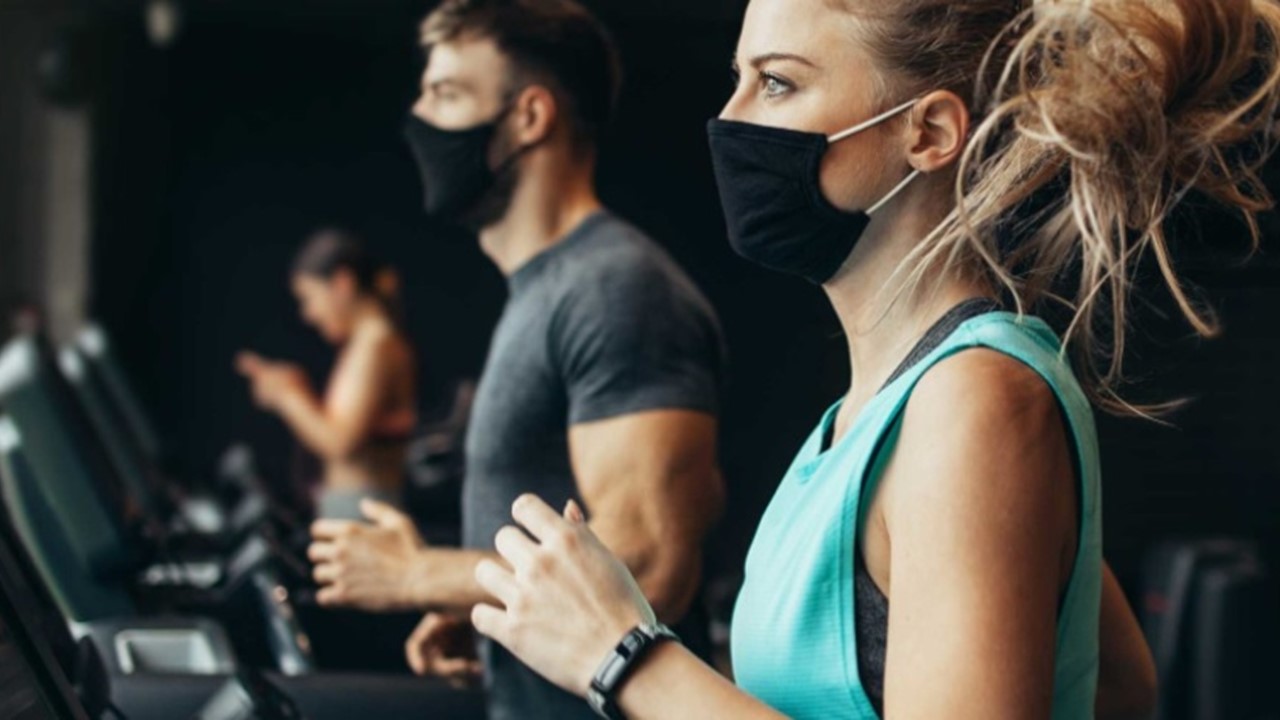By JULIE ONDRUSEK
Challenger brands know what it means to sweat. For underdogs, constantly fighting against companies with more money, more resources, more people, and more pull, you don’t have to explain what heavy lifting means. They understand pushing to exhaustion. Going longer, harder, and faster than they knew they could. Leaving it all on the floor. From the teams working membership and operations to the trainers and those doing branding, when you’re a fitness industry challenger, every day is an all-out workout. Who knew that a global pandemic would redefine what that meant for all of us?
Covid-19 And The Lost Year Of 2020.
There isn’t a business sector in America that wasn’t heavily impacted by COVID-19 and the pandemic’s aftereffects. But few, if any, find themselves as transformed as the fitness industry. Consider these sobering statistics from The Global Health & Fitness Association:
By the end of 2020:
• 17% of clubs permanently closed
• Industry revenue fell by 58% relative to 2019 sales
• 44% of the fitness industry workforce lost jobs
• By the spring of 2020, 300 million Americans were without access to a fitness center
No matter how big or how strong a fitness organization was in 2019, by the time they reached the spring of 2020, everyone had become a challenger brand fighting to survive. With the country in lockdown, gym membership plummeted along with revenue, jobs, and any semblance of normal. Even worse, there was no telling when gyms and fitness centers would return to business as usual. Of course, now we know — there was no going back to business as usual. For many, that turned out to be the cruelest part of the pandemic. But ironically, for those with the heart of a challenger brand, it also presented them with their greatest opportunity.
My New Gym Is Wherever I Want It.
As people continue trying to avoid COVID while still living their lives, some very real post-pandemic behaviors have started to emerge. Each one confirms one seismic truth — the consumer is now calling the shots and not just where gyms are concerned.
When people were forbidden to dine inside restaurants, the food industry shifted to curbside pickup. Then double drive-thru lanes and half a dozen kinds of delivery. Now that dine-in is once again available, many people have returned to eating at their favorite restaurants. But many have stuck with the new behaviors they grooved during lockdown and continue to prefer picking up their food, or having it delivered.
In fact, the new behaviors are so dramatic, Fast Casual chains like Shake Shack and Chipotle have announced plans to add drive-thru lanes to their concepts while QSR stalwart McDonald’s is spending upward of $300 million on AI to improve its own. What does that have to do with the fitness industry? A lot more than you might think.
Now, more than ever, “post-COVID” consumers want what they want, when and where they want it. That’s true for shopping and dining and it’s especially true for gym members.
Lockdown Changed Everything
During lockdown, people fell into one of three groups when it came to exercise:
• 1 — those who got little-to-no exercise before the pandemic and didn’t change their habits much at all
• 2 — people who were meeting exercise guidelines before the pandemic but reduced their activity when gyms shut down
• 3 — those who lost their gyms but took fitness into their own hands spurring a buying binge of workout equipment and skyrocketing valuations for companies like Peloton, Mirror, and CLMBR backed by entertainers Jay-Z and Pitbull
Now, 20 months from the beginning of lockdown, five very real truths have emerged for fitness companies and those doing fitness industry branding. For gyms and other fitness-centric brands, the key to not just surviving but thriving in the next decade will depend on how well they embrace and leverage these five truths.
THE 5 NEW TRUTHS TO FUEL GYM AND FITNESS SUCCESS
1. Gyms aren’t going away but they are being reimagined.
Once upon a time, gyms could find success with a simple “build it and they will come” approach. Fitness brands built big boxes, filled them with machines and weights, charged a moderate price, and people came to work out. That has evolved dramatically in the last decade thanks to smart watches, elite luxury gyms, boutique studios, and brands like Camp Gladiator that have forgone the traditional gym space altogether in favor of parking lots. During COVID, many people moved their workouts outdoors out of necessity. They turned to activities like walking, running, hiking, cycling, and rock climbing. They shifted to activities that don’t require a membership in anything. The point isn’t that traditional gyms are doomed. They’re not. But if they haven’t already begun thinking of how to reinvent themselves to be safer, friendlier, more relevant, and flexible, the time to do that is now.
2. Integrating and offering digital solutions is required.
If you study the gyms and fitness brands that thrived during the pandemic, almost every one was able to enhance their online presence or quickly transition to a digital platform where they could deliver meaningful content to their members. For most gyms, that took completely rethinking how they saw themselves. But for those who made the transition, adding digital solutions to the mix didn’t just keep members both enrolled and engaged, it did something even greater. It built a bridge to the hybrid “on-site, off-site” fitness lifestyle people are hanging on to even now that they can return to the gym.
“We used to think a workout had to be 50 minutes and it had to be in a gym,” noted Equinox manager of innovation Matt Delaney in a March article in Men’s Fitness. “But thanks to the pandemic, people are realizing that a 20-minute class on an app at home or a circuit using water jugs as weights can be a good workout for the day, but it also can’t be what you do all of the time. The gyms of the future will include digital offerings that help you do the at-home stuff better. You’ll visit to connect with the community, to use big weights and other specialized equipment, and receive more tailored, in-person coaching.”
3. You have to meet people where they are, not where you want them to be.
Post-COVID, gyms increasingly must be a valuable resource for when and how people choose to work out. If that’s in a big open gym with hundreds of other people, great. If that’s alone at home participating in an online class on their smart phone or TV, equally fine. The concept of “working out” is more flexible than ever and I think you’ll soon see fitness industry branding reflecting that.
According to Fortune Business Insights, the home fitness equipment market is projected to hit almost $15 billion by 2028. The days of HAVING to go to a gym to get a good workout are over. Truthfully, that was always the case. But for those who enjoy going to the gym, COVID crystalized that realization and brought with it a number of questions for every member to consider. Is my gym worth the drive? Is it worth the extra time, money, and effort? Can I work out on my own?
Now that people are aware of the endless options they have for working out, the question gyms have to answer is, “what are we offering that’s so compelling people want to make us part of their workout equation?”
A gym’s value cannot be measured by the visits its members make to the gym. If it is, they lose.
They win, and expand and hold their membership, when the gym becomes a relevant, constant, valuable part of its members’ lives – not for two, three, or five hours a week – but throughout their day, whenever and wherever they want that gym to be.
4. Mental health can no longer be an afterthought.
A recent study from Kaiser found that 4 in 10 adults in the U.S. have reported symptoms of anxiety or depressive disorder in 2021. Further, compared to 2019 statistics, 56% of young adults report symptoms of anxiety or depressive disorder and that group is also more likely to report substance abuse (25% vs. 13%) and suicidal thoughts (26% vs. 11%).
As damaging as physical inactivity was during COVID, many believe the long-term effects on mental health may be far more detrimental. That presents an enormous opportunity for gyms and fitness brands to step up and add mental health to their mission and focus. The ties between physical and mental health are well-documented and I believe the fitness brands offering solutions to support their members’ overall physical, mental, and even emotional well-being are the ones you’ll see fully integrated into those members’ lives moving forward.
5. It’s time for fitness industry branding to get creative.
Great creative always comes from leveraging great insight. For most gyms, pre-COVID, advertising was fairly homogenous. Great shots of the open gym, smiley people on bikes, treadmills, and lifting weights, bold graphics calling out the low monthly price, all backed by an energetic music track. And there’s nothing wrong with those kinds of spots. When done well, they grab attention and often drive membership. But post-COVID, the fitness world has changed dramatically and there’s a spectacular opportunity for those who do fitness industry branding to change with it.
Whether they know it or not, every workout-focused brand, every high-end fitness center is now a challenger brand and will be for the foreseeable future.
To succeed, they’ll have to understand three things – who they are, where they fit, and maybe most importantly, how they choose to go to battle and with whom. Fitness industry branding grounded in post-pandemic insights – integrating digital, the evolution of workout habits and preferences, incorporating a focus on mental health, and showing imagination in how brands cultivate the relationships with their members – will be the work that moves the winning brands to the front of the line.
JULIE ONDRUSEK is COO and Director of Client Services at LOOMIS, the country’s leading challenger brand advertising agency and a top Dallas advertising agency for digital, social, mobile and user experience. For more about challenger branding, advertising and marketing, leadership, culture and other inspirations that will drive your success, visit our blog BARK! The Voice of the Underdog and catch up on all of our posts.
For more about LOOMIS, or to discuss how we can help your company succeed, CLICK HERE
original content 









